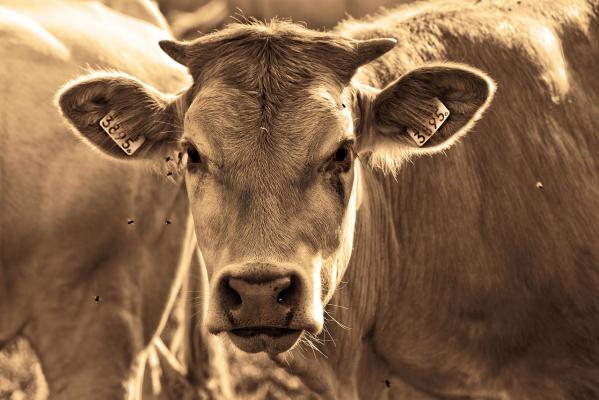
By Jeremy Sollars
(PRECEDE)
There’s no vaccine yet for COVID-19 , but there is one for another ‘zoonosis’ or animal-borne disease – Q Fever. Australian researchers are working on an improved Q Fever vaccine but the one already available is effective. If you work in the livestock and related industries and aren’t vaccinated for Q Fever it’s a must…
(SUBHEAD)
TRIALS ON TRACK…
A new and improved Q Fever vaccine is progressing to pre-clinical trials following a $1.87 million injection from the Australian Government earlier this month.
Federal Regional Health Minister Mark Coulton has labelled Q fever a major issue for regional Australians.
“Q fever is a disease that affects families across the country,” he said.
“I know people who have suffered the ill-effects, which vary in intensity from one person to the next, and know how important it is to ensure Australians have access to the best medical products possible.
“That is why the Government is acting to provide more support and more options for most at-risk Australians.”
The bacteria that causes Q Fever is spread from animals, mainly cattle, sheep and goats, but can travel up to 30 kilometres in dry, windy conditions and infect people who have had no contact with animals.
National Farmers Federation CEO Tony Mahar said the trial made possible by the funding is a significant step towards a more efficient and easier-to-access Q Fever vaccine.
“The disease is most commonly contracted by those working with livestock on property or in abattoirs, with times of drought considered particularly dangerous,” Mr Mahar said.
“There is no more important priority for agriculture than protecting the health and wellbeing of our people.
“Q Fever is an all-too-common illness affecting farmers and others employed in rural and livestock-focussed industries, impacting people, in some cases, for many years.”
Mr Coulton said the Government is keen to reduce the impact of Q fever and has been subsidising supply of the existing vaccine for many years.
“I’m excited by the potential of this new generation vaccine, being developed by an Australian research partnership. It could be a breakthrough for not only Australian farmers and meatworkers, but rural communities around the world,” he said.
“One of the potential advantages of the new vaccine is that, unlike the existing vaccine, you don’t need a test before you have it.
“This will eliminate extra costs and time in getting vaccinated, which discourages people from getting the protection they need, even though they may be at high risk of exposure.
“This development is exciting and compliments the Government’s investment in the existing Q-Vax vaccine, which so many rural Australians, including me, currently rely on.”
Funding is provided to DMTC, which leads a national Medical Countermeasures Initiative with support from a range of Australian government agencies including the Departments of Defence and Health.
DMTC will work with research and industry partners to manage the staged development of a new Q fever vaccine, including the Australian Rickettsial Reference Laboratory, a WHO collaborative laboratory in Geelong, Victoria. Dr Stephen Graves leads the research team.
The study will investigate the dose-effectiveness of the novel vaccine compared to the current vaccine, Q-Vax, as a prelude to clinical trials on people.
(SUBHEAD)
AGFORCE CALL…
AgForce is calling on the State Government to invest in and improve access to the vaccine for Q fever.
Approximately one-third of people who develop Q fever end up in hospital with complications such as Hepatitis, pneumonia, meningitis, and inflammation of the heart.
Around 20 per cent of people with acute Q fever develop prolonged fatigue, which can be severe enough to prevent them working for the rest of their lives.
Chair of AgForce’s Work Health and Safety Policy Committee Jacqui Cannon said “it’s important to highlight this disease affecting the lives of the dedicated farming families and their employees who have kept the supermarket shelves stocked for the rest of the state and the country during the COVID-19 pandemic”.
“A vaccine for Q fever does exist. But the cost is so prohibitive, the current testing regime such a drain on these busy people’s lives, the numbers of doctor’s registered to administer the vaccine so low, that many avoid it,” Ms Cannon said.
“Previously, the Federal Government ran a National Q fever Management Program, but that now holds the unenviable reputation of being the only government-funded vaccination program ever defunded in Australia.
“That’s why we need the Queensland Government to follow the lead of New South Wales, which has provided funding for Q fever awareness, including online learning for GPs, and research into a new vaccine that doesn’t require multiple doctor visits.”
Ms Cannon said Q fever wasn’t just an issue for those living in regional and rural Queensland, but for visitors from the city who are generally unaware of the risks.
“Q fever doesn’t only affect farm animals. Kangaroos, camels, dogs and cats, can also cause infection. All you need to do is inhale the dust from where an infected animal may have been sleeping,” she said.
“But because those in the bush are most at risk, it’s hard not to see the lack of government intervention on this issue as another example of regional Queenslanders being left behind those in the city.
“That’s why we’re imploring the State Government to stand with regional Queensland, stand with farming families and their workers, and increase the funding for and awareness of Q fever for the health and safety of all Queenslanders.”
(BREAKOUT)
SEE YOUR DOCTOR…
Dr Lynton Hudson from the Condamine Medical Centre in Warwick says the practice has been running Q Fever clinics for many years and while many locals working in livestock and related industries are vaccinated it’s always worthwhile raising awareness.
Q Fever can be treated with antibiotics but like anything prevention is a far better course of action.
Many employers will pay for Q Fever vaccines while for others the vaccine is relatively inexpensive – at around $300 a jab it’s a sound investment when you consider the potential long-term effects of Q Fever.
Due to the high workers’ compensation costs associated with Q Fever many ag employers won’t take on people who aren’t vaccinated.
“It (Q Fever) is the most common ‘zoonosis’ or animal-borne disease that we see in rural communities,” Dr Hudson told the Free Times.
“There’s a wide spectrum of presentations but the classic symptom is an awful, overall headache.
“The headache can have you laid out in bed for days.
“It can present a little like the flu in terms of body-aches and fatigue and a fever, but without the respiratory symptoms – the coughing and sore throat associated with the flu.
“The long-term complications which we do see from time to time can be things like heart valve issues or even meningitis, but the fatigue can also be quite long-term.
“The highest risk in my experience seems to be people helping animals giving birth.
“But the spores can live in the dust for up to two years so the risk is pretty widespread across animal industries.”
(BREAKOUT)
ABOUT Q FEVER…
(SUBHEAD)
WHAT ARE THE SYMPTOMS?
Many infected people have no or few symptoms. People who do become sick often have a severe flu-like illness. Symptoms begin about 2-3 weeks after coming into contact with the bacteria and typically include:
• high fevers and chills
• severe ‘drenching’ sweats • severe headaches, often behind the eyes
• muscle and joint pains
• extreme fatigue (tiredness).
Patients may also develop hepatitis (inflammation of the liver) or pneumonia (infection of the lungs). Without treatment, symptoms can last from 2-6 weeks. Illness often results in time off work, lasting from a few days to several weeks. Most people make a full recovery and become immune to repeat infections. Occasionally, people develop chronic infections up to 2 years later which can cause a range of health issues including heart problems (endocarditis). This is more common for pregnant women, people with weakened immune systems or previous heart problems. About 10% of patients who are sick with acute Q fever go on to suffer from a chronic-fatigue-like illness which can be very debilitating for years.
(SUBHEAD)
HOW IS Q FEVER SPREAD?
You can get infected with Q fever by breathing in the bacteria that is in the air or dust –
• while birthing, slaughtering or butchering infected animals (especially cattle, sheep or goats). These activities carry a very high risk of infection.
• when handling infected animals, infected animal tissues, fluids or excretions or animal products or materials that have been infected including wool, hides, straw, manure fertiliser and clothes (e.g. washing clothes worn when birthing, butchering or slaughtering animals)
• while herding, shearing or transporting animals
• while mowing grass contaminated by infected animal excretions
• when visiting, living or working in/near a high-risk industry
• direct contact with infected animal tissue or fluids on broken skin (e.g. cuts or needlestick injuries when working with infected animals)
• drinking unpasteurised milk from infected cows, sheep and goats.
(SUBHEAD)
WHO IS AT RISK?
Workers in the following occupations are at high risk of Q fever:
• abattoir and meat workers
• livestock and dairy farmers and farm workers
• shearers, wool classers/sorters, pelt and hide processors
• stockyard/feedlot workers and transporters of animals, animal products and waste
• veterinarians, veterinary nurses/assistants/students and others working with veterinary specimens
• wildlife workers working with high-risk animals (including Australian native wildlife)
• agriculture college staff and students (working with high-risk animals)
• laboratory workers (working with the bacteria or with high-risk veterinary specimens)
• animal shooters/hunters
• dog/cat breeders, and anyone regularly exposed to animals who are due to give birth
• people whose work involves regular mowing in areas frequented by livestock or wild animals (e.g. council employees, golf course workers or staff of mowing businesses in regional and rural areas).







